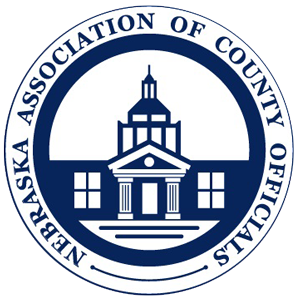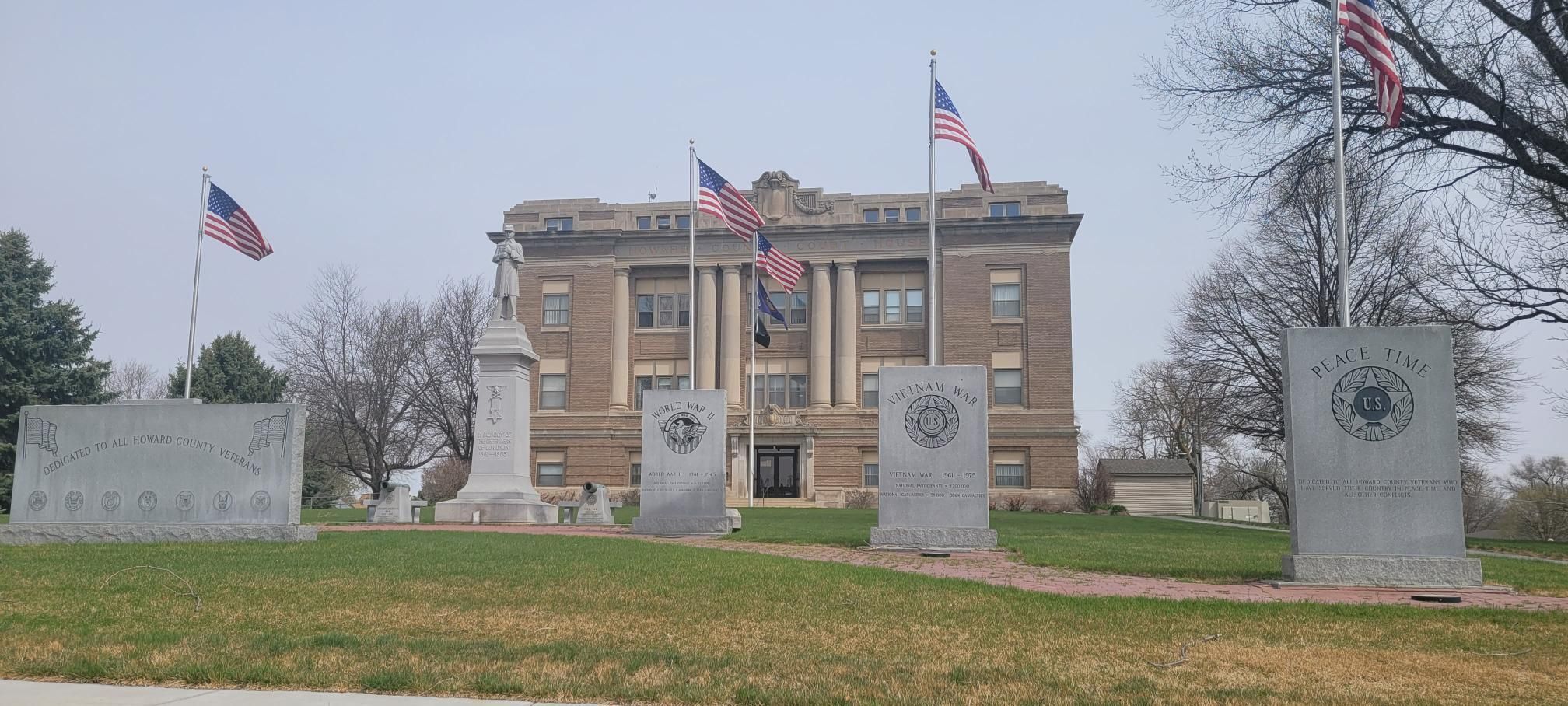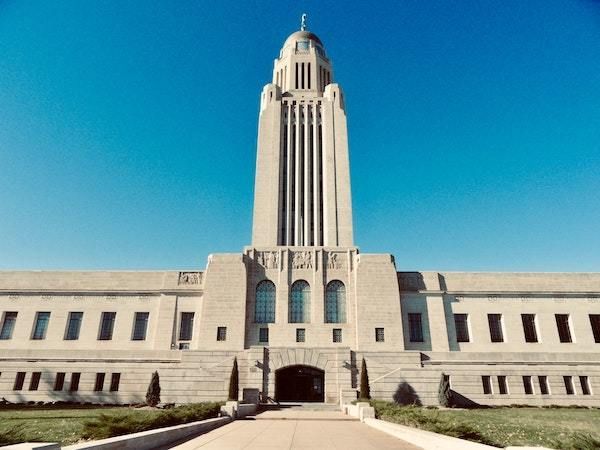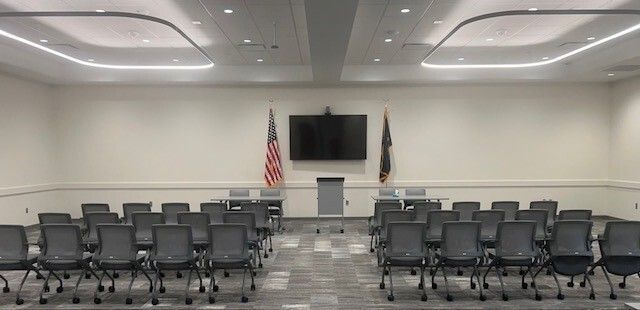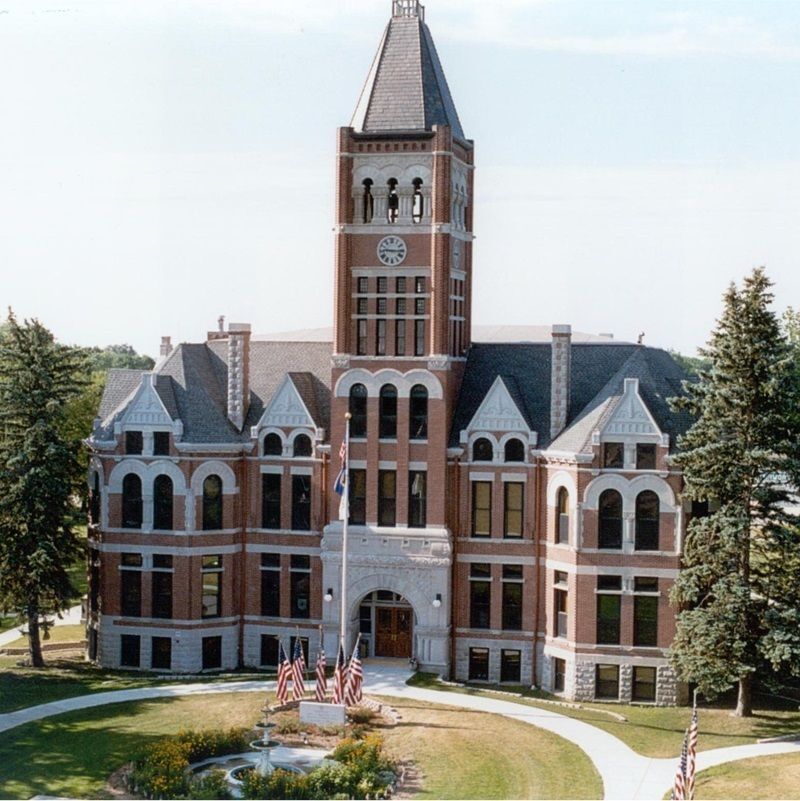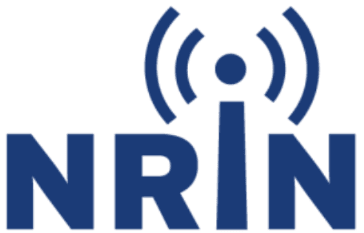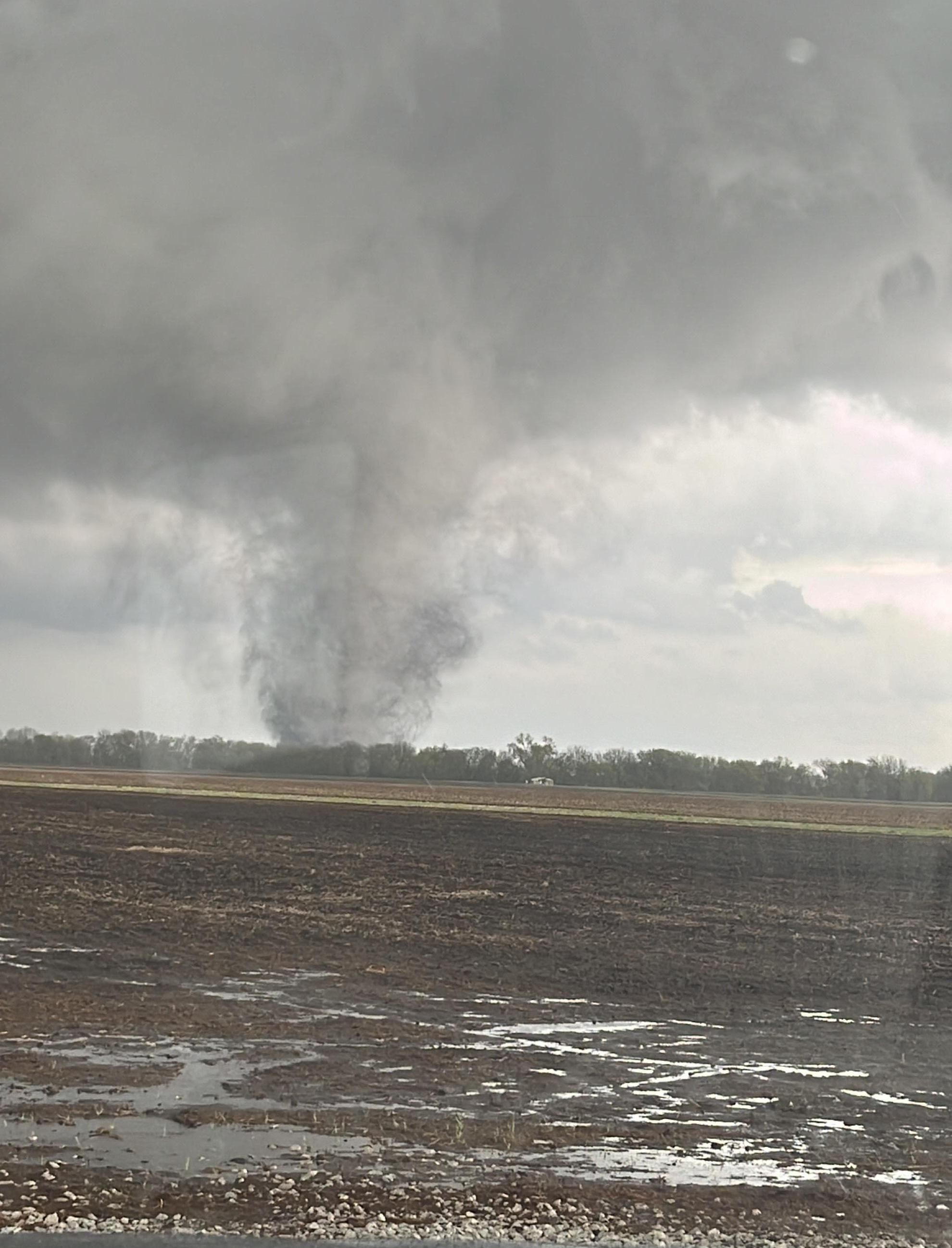
Whitney Shipley - Douglas County Emergency Manager
1. What are some of the key elements involved in preparing a county or region for emergencies or disasters?
In Emergency Management, we discuss there being 5 different elements that are necessary for cities, counties, and regions to be optimally prepared for an emergency or disaster: planning, organization (aka engagement), equipment, training, and exercise.
○ Planning - Whether it’s writing emergency operations plans or convening stakeholders to identify what steps need to be taken to assure the health and safety of the community before, during, or after an incident - it’s usually the emergency manager in every county who’s spearheading those efforts. Planning involves the unique ability to look at both to appreciate both the “big picture” impacts and the “small picture” impacts of an emergency simultaneously. Emergency Managers are unique in the sense that, generally speaking, their training enables them to do both very well!
○ Organization - In order to be optimally prepared, it’s necessary that the right people be engaged at every level and supportive of emergency preparedness. Whether it’s senior officials, responders, people who work in the Emergency Operations Center, or the communications personnel, all need to be equally informed, engaged, and committed to any plans that are developed. Without that level of engagement and commitment, there will inevitably be gaps in the preparedness strategy.
○ Equipment - Plans and engagement only go so far! Once plans have been developed and the right people are engaged in implementing them, it’s necessary to make sure that those folks have the right equipment available to them to implement the plans. In some cases, that means having a good working knowledge of what resources already exist within the county to support emergency response and recovery. In other cases, it means having a good working knowledge of what resources are available through mutual aid or state or federal resources. The responders are knowledgeable about existing resources and mutual aid, but it’s the emergency managers who typically have the know-how about how/where to access additional resources, including those available through the state or federal government.
○ Training and Exercise - Once plans are developed, people are committed to following them, and appropriate resources are available to effectively execute them, it’s necessary that every single person that’s named in a plan be informed of and provided adequate opportunity to learn skills necessary to be successful in that role (training) and provided opportunity to practice those skills (exercise). It’s not unusual for individual agencies
to have training and exercise programs, but it’s usually the emergency manager who takes the lead on making sure that there are similar opportunities for training and practice among those agencies.
2. How might emergency management look different in your area compared to elsewhere in the state?
○ The Omaha Metro area is a very resource-rich part of the state, so its challenges are usually less associated with acquiring outside resources than achieving optimal coordination among existing resources. While other regions rely on cooperation among counties to meet their objectives, we are usually able to meet the need using resources already available within our county. That makes us less dependent on the state, but means we also don’t have as much experience with mutual aid as other counties do, simply because we don’t have to do it as often.
3. How do you work with other local agencies to coordinate emergency preparedness?
○ Annually, we conduct a “Threat and Hazard Identification and Risk Analysis”, which is a large-scale, comprehensive planning effort that engages elements of the whole community—responders, emergency managers, healthcare facilities, educational institutions, public health officials, non-governmental organizations that serve special segments of the public, disaster relief organizations, etc. We use the information collected there to inform our priorities and help determine where we have gaps in planning, organization, equipment, training, and exercise that need to be addressed over the course of the next 12 months. Some of those elements are ones that agencies take away as ones that need to be addressed internally to their agency/organization. Others are ones we decide need to be addressed through interagency coordination. That interagency coordination often looks like holding or participating in others’ planning, training, and exercise activities (which often feels like meetings, meetings, and more meetings!).
4. What are some proactive measures your office takes to reduce risk before a disaster strikes?
○ From an emergency management standpoint, “risk” is considered to be a function of likelihood and impact. Likelihood is not always something we can impact. For example, we can’t make weather events less likely. However, we can lesson the impact by making sure there are working outdoor sirens and alert systems to lessen the negative impact. Likewise,
we also work to make sure there’s a functioning Emergency Operations Center that’s ready to swing into action on a moment’s notice to assure that responders have all the resources readily available to them to effectively save lives and protect health and property, and help facilitate the transition to disaster recovery once response operations have concluded. We also use public outreach to help the public understand the threats and hazards that are characteristic of our county and what measures to take to ensure that they are best positioned to safeguard their own personal and family health and safety while responders are busy tending to those same issues at the community level.
5. What does a successful response look like when emergencies do happen?
○It involves engagement of every aspect of the community–individuals tending to their own, their family’s, and their neighbors’ needs where possible; non-governmental organizations pitching in to help fill gaps that are outside the scope of local government; and local government officials executive carefully crafted, equipped, trained and practiced plans to cover the core emergency functions, with senior officials and emergency managers assisting in developing just-in-time solutions to needs that may not have been foreseeable.
6. What are some common misconceptions the public has about emergency management?
○The public often operates under the misconception that emergency managers “run” disasters when, in fact, that function is executed by local responders in accordance with their own internal policies set by their own elected officials and agency officials. As emergency managers, our role is to coordinate activities among those responders when whatever incident at hand is one that stretches them beyond the scope of their existing plans and resources. We are very much a “behind the scenes” agency, even more so in an urban area like Omaha, where there are so many responders tending to the front-line operations. Significant in some counties more than others (definitely here in Douglas County) is the fact that responders and emergency managers often work for completely different bodies of elected officials, and so emergency managers don’t have the authority to make decisions about how the response is executed or even to interject without a direct invitation to participate in the incident.
oThe public sometimes assumes that emergency managers wait for an emergency to happen before acting. The truth is, an immense amount of work has to happen in order to prepare for a disaster, so we stay busy 24/7, 365, regardless of whether or not there is an active incident underway.
○The public also tends to assume that there’s assistance available throughemergency management to assist them with their personal needs after adisaster, and that’s usually not the case. I like to tell people that, generallyspeaking, there are very few things that the government is able to do foryou in an emergency that it does on a daily basis. For example, we can’treplace food lost as a result of a power outage, and we can’t remove debrisfrom your personal property. These are not things local government doeson a daily basis, which means there’s no pool of local tax funds available topay for these sorts of things following an emergency. That’s why thegovernment relies so much on non-governmental agencies for disasterrelief efforts–very generous philanthropists and dedicated organizationshelp fill (some) gaps of individual households for which there are nogovernment-sponsored/funded solutions.
7.How can residents better prepare themselves and support emergencyefforts in their communities?
○Residents need to give some advanced thought to all the functions andresources that would be necessary to protect their well-being during andsustain daily life following an emergency, knowing that not all needs fallwithin the scope of those that can be met by the government or addressedquickly. Residents need to approach personal preparedness in much thesame manner we do when preparing for emergencies at the communitylevel–by examining those same 5 elements – planning, organization,equipment, training, and exercise. Examples include:
○Plan who will pick up your child from school or daycare if a disaster strikeswhile you’re separated.
○Assure your child knows what actions to take to protect their health andsafety if you’re not present when a disaster strikes. Children left aloneafter school, for example, need to know what actions to take when a sirensounds.
○Have a backup plan for a power outage–ie cash on hand in case ATMsaren’t working; gas in the car in case gas pumps aren’t working; ice/coolerready to extend the life of medication or food; backup batteries and powerpacks and/or solar chargers for phones or medical equipment; find outwho in your neighborhood has a generator you can use to charge yourphone or medical equipment, should it become necessary.
○ Government is limited in its ability to provide services on private property, so have a plan for who might be able to assist with clearing and disposing of debris from private property if it becomes necessary following an event - neighbors, friends, family, church group, contractor, etc.
○ Have enough supplies on hand to tend to your personal/family’s needs until roads are cleared, including food, water, pet care items, diapers/formula, etc.
○ Assure that everyone in the household and environment is aware of your plan and prepared to support it if need be, taking into account how the plan might need to differ if it happens while one or both parents are at work; how it might need to be executed if phones or internet are not functioning, etc.
○ Have tornado drills at home, assuring that each member of the family is independently able to identify and make their way to the safest part of their home during severe weather.
8. Are there any community outreach programs or initiatives you’re particularly proud of?
○ Public outreach hasn’t been one of our strong suits in recent years because we’re understaffed for a county of our size (population), but this is an area we’re finally able to start addressing. Look for more to come! What we are particularly proud of at this point, however, are the strides we’ve made in recent months in planning, engagement, training, and exercise at the local government and partner level. Once we’ve made sure those internal elements of preparedness are sound, we’ll take it to the people!
9. What innovations or changes are you hoping to implement in the next few years?
○ We’re in the process of building a preparedness toolkit for both the public and government planning partners that includes templates for plans, training, and exercise; resource lists; contact lists; and reference materials.
○ We look forward to expanding an integrated planning initiative we launched this year that is based on a cyclical, 3-year, continuous improvement process that parallels similar efforts underway at the state level.
10. Can you share a story about a specific emergency that you helped prepare for and respond to?
There are many, too many to share here. However, the one that’s most commonly referred to in our area in recent years was last year’s Arbor Day Tornado, which was one of 2 tornadoes to impact Douglas County the afternoon of April 26, 2024:
- The EF4 tornado was 1 mile wide, carried winds in excess of 165 mph, and was on the ground for 31.2 miles, destroying homes in the
Waterloo, Elkhorn, and Bennington area as well as some unincorporated areas in western Douglas County. 183 homes were destroyed. Another 236 received major damage, 168 received minor damage, and 334 were otherwise affected in some manner. There was extensive damage to the power infrastructure.
- The response and recovery efforts called for us to provide advanced warning, establish shelters, coordinate release of information to the public, coordinate operations across 20+ government and multiple nongovernmental agencies, manage large amounts of debris, and conduct search and rescue operations under challenging conditions–all of which were executed in accordance with emergency operations planning, training, and exercises coordinated by emergency management stakeholders.
- Emergency managers in a metro area typically don’t respond to the scene and, instead, are working off-site in a central location providing more administrative support, and so I don’t have many photos to share, but I’m sure you can find hundreds of them online. A few that I have that I’ve used for presentations:
